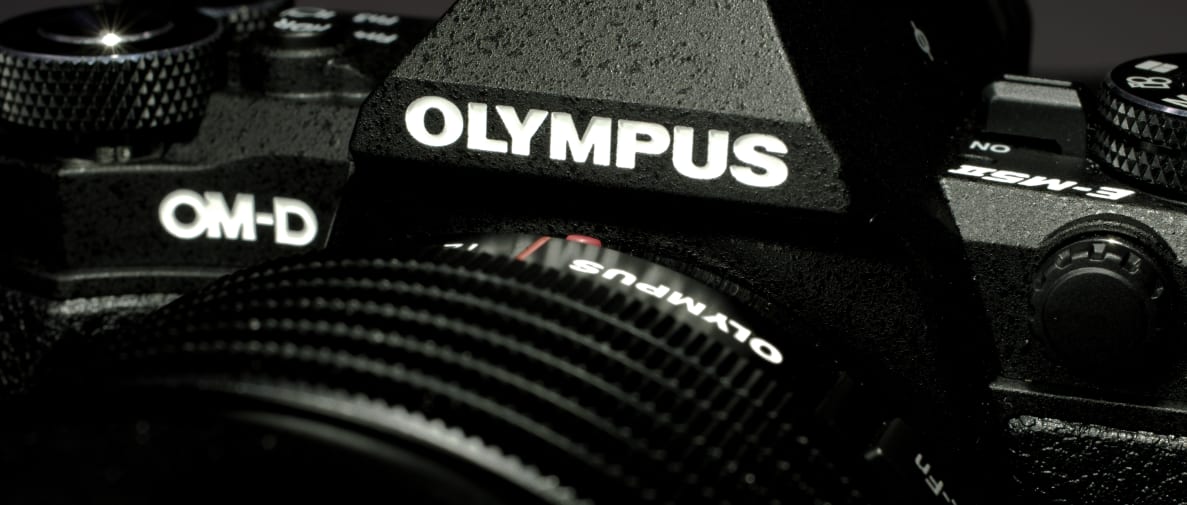Pros
Cons
Olympus offered up a compelling take on what a mirrorless camera could do in 2012, with the excellent OM-D E-M5. This little powerhouse cast a spell on photographers, impressing with a great Four Thirds sensor, weather-proofing, and the world's first five-axis image stabilization system. Olympus built on that success with the pro-grade OM-D E-M1, which was our Camera of the Year for 2013.
But Olympus isn't the only company pushing the boundaries of what a mirrorless camera can do; Sony, Samsung, Panasonic, and Fujifilm have also stepped up their game. That competition has driven Olympus to return to the E-M5 concept, improving it in nearly every way. The only problem? It's so good that it may turn E-M1 owners green with envy.
Design & Handling
Tighter, Tougher...simply terrific
In the intervening years since the first OM-D E-M5 was released, Olympus has learned a whole lot about how to build a premium camera that gets enthusiasts' blood a-pumping. As soon as we took it out of the box, the E-M5 Mark II just felt right. It has a unique look, and the solid build quality that you'd expect from a camera that costs over a grand. The E-M5's squishy buttons are but a distant memory thanks to the changes that Olympus made to the Mark II.
{{ photo_gallery name="tour" }}
Many of the additions that come with the OM-D E-M5 Mark II are hand-me-downs from the E-M1, but they're still good as new and look great on this new camera. The 2x2 dial control scheme is here in all its glory, utilizing a toggle to change up the function of the camera's front and rear dials with a click. The Mark II also sports the 2.36M-dot electronic viewfinder from the E-M1, and it's still one of the sharpest, best units out there.
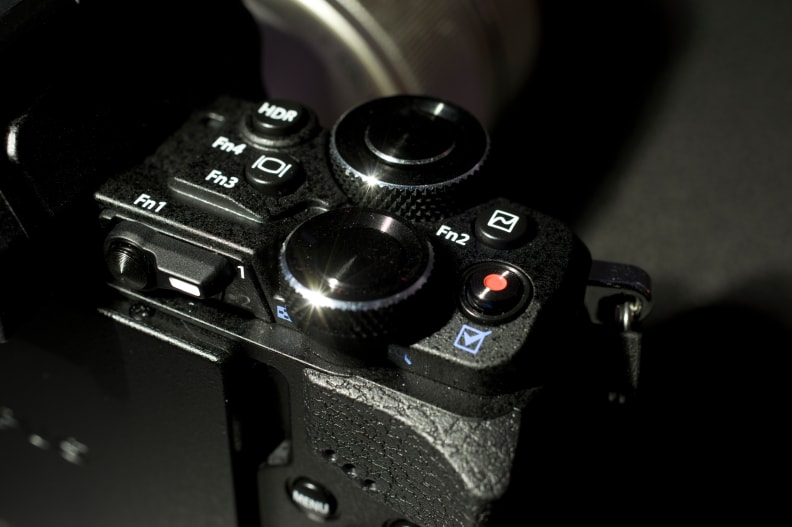
Two control dials, with two functions each (and a partridge in a pear tree).
We are very thankful that Olympus moved the power switch from the lower right hand corner to the top panel. The funny thing is that, after shooting with the original E-M5 and the E-M10 over the years, it took us a few days to adapt to the top-mounted power switch. It tripped us up at first, but if you're a new OM-D shooter, you'll never know that it was any other way.
The new, improved front grip material and contoured front panel design both go a long way to make the E-M5 II feel really substantial beneath your fingertips. Moreover, we're head-over-heels in love with the black version's new hammer tone finish. That's not to say that the older OM-D E-M5 wasn't pretty or chintzy—this incarnation simply feels tauter and ready to tackle tough environments with its weathersealing.
Just about the only new feature that the E-M5 Mark II throws into the mix that we aren't so keen on is the articulated LCD. Olympus is advertising that the E-M5 Mark II is an improvement for video, and it's better for selfies on-tripod use, and so the 3-inch variangle LCD makes some sense. It's well executed, but for such a small camera, we never quite gelled with how it worked.
With past Olympus cameras, it was a simple flick to tilt the screen up for waist-level style shooting. The process to do the same thing with the E-M5 Mark II is more complicated, and then the camera becomes almost twice as wide once the screen is in position. It's less discreet, which is an attribute that describes past OM-Ds very well.
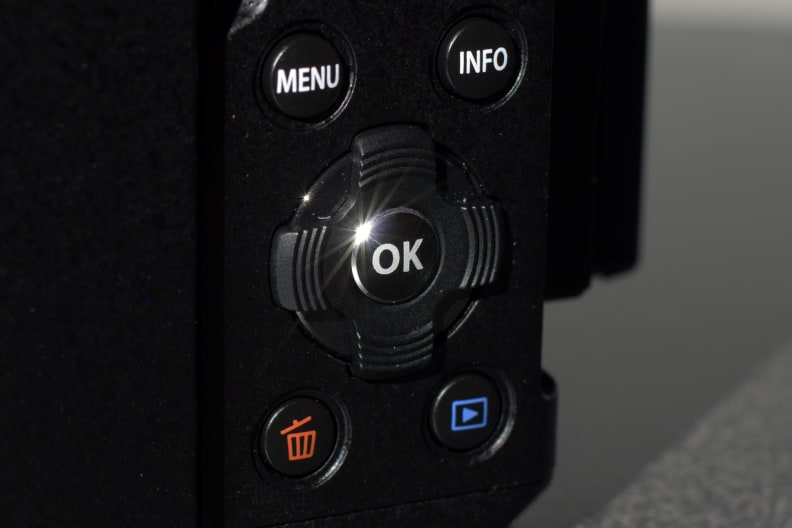
All the buttons on the E-M5 II feel great to use.
To bring up an age-old complaint once more: Olympus continues to load its cameras with overly complex menus. It's not so bad once you get used to it, but five years on we still get lost sometimes. At the very least, Olympus has set its very helpful Super Control Panel to pop up by default, so it's easy to access common and advanced features without getting lost in the twisty, confusing maze of menus.
One touch we enjoyed while unboxing the OM-D E-M5 Mark II is that it includes a nifty retro strap, with blue and gold stripes and embroidered logos on it. What we didn't like is how this strap fit the camera—the location of the strap lugs, along with the thickness of the strap made it really awkward to use. It sits right underneath where your pointer finger wants to rest on the critical right side of the camera. While this is a compromise with a smaller camera, competing compact options often have less obtrusive strap mounting points.
{{ photo_gallery name="design" }}
Features
Five-axis stabilization learns new tricks
Olympus didn't skimp out on features with the E-M5 II. Just about the biggest complaint we've heard from Olympus shooters is that it makes the value proposition of an E-M1 seem questionable. Why would you invest more money into that camera when the Mark II offers more of just about everything?
Unlike the outgoing E-M5, this second version includes Olympus's very good WiFi implementation. While you won't find NFC here, it's a negligible loss. Once you have your phone paired via a QR code, you can remotely control the camera and also transfer photos to your phone, and out to all your favorite social networks.
This camera's improved image stabilization system improves the shooting experience. Even with fast glass, the E-M5 Mark II allows this camera to outshoot many of its competitors, since you get an additional 5 stops of protection against shake, enabling longer shutter speeds without blurring. It's super useful in low-light situations but it comes in handy just about all the time.
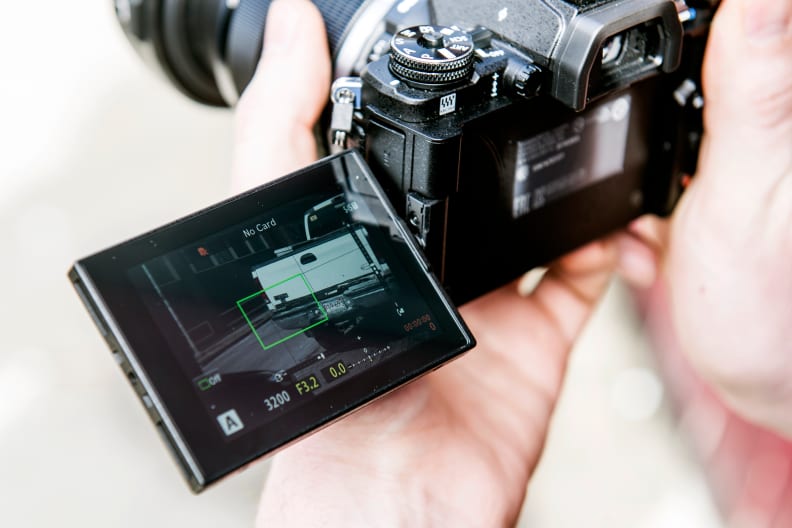
You may or may not care for the new camcorder-style LCD on the E-M5 Mark II, depending on what you use it for.
If you've ever wished for improved stabilization with video, then Olympus has finally delivered on that, too. Even those with shaky hands can get footage that's almost as good as what you'd get with a specialized steadicam rig. Unfortunately, the camera's overall video feature set and performance is still a little lacking when compared to what Micro Four Thirds cameras from Panasonic can manage.
Unlike the original E-M5, the E-M5 Mark II finally includes a port for an external microphone. Moreover, if you spring for the optional accessory grip, the HLD-8G, you get a headphone jack for monitoring in-camera audio. You might not want to give up your GH4 quite yet, but Olympus has made some real progress with video functionality in this latest OM-D.
When we first got our hands on the E-M5 Mark II, we just had to try its 40-megapixel high-res shooting option. Using the improved sensor shift mechanism that's usually leveraged for image stabilization, Olympus has figured out a way to stitch together multiple images. You'll need a tripod or a completely still surface to get good results—no hand-holding will keep the camera steady enough. The high resolution images are not only large, but also busting at the seams with extra sharpness. Check out the samples below to see the difference between a standard 16-megapixel shot and one of the 40-megapixel ones.
The only drawback to this high-res function is that your subject needs to be still in order for the photos to stitch together properly. We tried an informal sitting with a Reviewed.com employee, and even though he sat pretty still, portions of his face didn't come out sharp at all. The process is fast, but, unless you have a very still model at hand, your best bet is to use this to shoot dioramas and landscapes.
Performance
Some of the best we've seen from Micro Four Thirds
While some still scoff at Micro Four Thirds and its smaller sensor, there's no questioning that the system has made giant strides in the past few years. Performance is no issue in most shooting scenarios, and the lens ecosystem is so vibrant and diverse that it's hard to choose which lens is our favorite. Full frame might reign supreme, but cameras like this underscore the blend of great portability and high image quality Micro Four Thirds represents.
{{ photo_gallery "sample-photo" }}
That said, Olympus has never had its eye on the ball when it comes to video shooting. We have often criticized the company for ignoring the importance of video, but it's always played second fiddle to the very capable still-capturing technology Olympus has developed. What's worse is that Olympus's Micro Four Thirds stablemate, Panasonic, continuously blows us away with how capable their higher-end cameras handle video capture, with the GH4 retaining the crown for hybrid video/stills in 2014.
Well, we gotta hand it to Olympus. The OM-D E-M5 Mark II is an improvement in just about every way. It's not gonna dethrone the GH4 this year, the proper attention has been paid to HD and it shows in picture quality and the options that are available to videographers here. For the first time ever, this OM-D can shoot 1080/24p and even 1080/60p. That's not all, as the new Super Fine compression option is 77 Mbps in All-I, and there's even clean HDMI out, giving you 4:2:2 chroma subsampling and 8-bit color depth.
Unfortunately, the video still turned out less than great, but decent for 1080p, at 750 LP/PH horizontal and 720 LP/PH vertical in our bright light test. Those numbers dropped off to 615 horizontal and 620 vertical in our low-light shooting scenario. While 60p video looked very fluid and motion wasn't choppy, the overall image was softer than we've seen from cameras like the GH4 and A7s. Add in some moiré, and you get footage that still clearly trails behind the pack.
{{brightcove '4114985380001'}}
Battery life also continues to be a little iffy with mirrorless options, but we have to say that we think Olympus has the edge on some of its competition. Never did we feel like this camera was going to die on us, even with its CIPA-rated 310 shots per charge. That doesn't sound like a lot of shots, and it's not. A drawback of the E-M5 II when compared to Sony's Alpha cameras and a few other mirrorless competitors is that you can't recharge via USB. We'd love to see Olympus throw this feature in as it's super handy, especially if you travel with your gear frequently.

Where the more expensive OM-D E-M1 is still rules is when it comes to burst shooting. While the E-M5 II still gets over 10 FPS, the buffer is much smaller. We were able to capture 13 JPEGs before the speed slowed down substantially; the E-M1 chewed through up 43 before filling its buffer. If you're planning on shooting action or sports, the E-M1's superior burst capacity along with its phase detection for tracking motion makes it the best option.
Conclusion
Another excellent little OM-D
When the original OM-D E-M5 debuted almost three years ago, it was sold on the promise of five-axis stabilization and retro design, tipping its hat to the legacy of Olympus's OM film cameras. That legacy lives on, but the OM-D has built its own legend. While the E-M5 II still owes its look to those film SLRs, Olympus is playing on sensibilities beyond simple nostalgia. The digital kin of the OM has paid its dues in full, and it's here to stay.
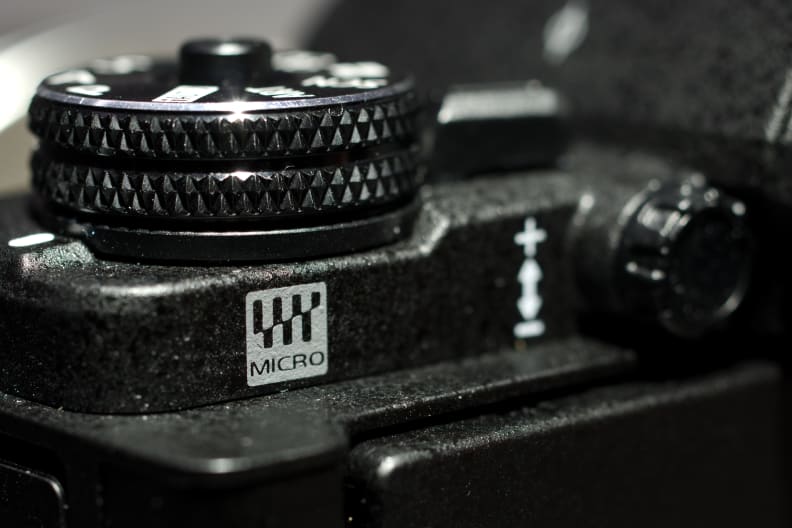
The E-M5 Mark II is a perfect example of how Micro Four Thirds offers a great compromise between portability and performance.
If you look at it as the "mid-range" option from Olympus, then the E-M5 Mark II doesn't seem all that special. It's sitting on the shelf alongside competition that often is less expensive and, in some cases, nearly as good. Options like the Sony A6000 ($700 with a kit lens), the competing Panasonic Lumix GX7 ($800, depending where you look) and even Olympus's own OM-D E-M10 (around $799) offer EVFs, high-grade build, and great performance for less.
But, if a combination of excellent performance, responsive control, and finely machined, weather-sealed build appeal to you, then it's gonna be hard to pass the OM-D E-M5 Mark II up. Sure, your return on investment isn't as high as the cheaper, excellent cameras we listed above, but there's no question that the E-M5 Mark II is a better overall camera.
In reality, the closest point of comparison is the E-M1, which is several hundred dollars more. If you don't care about the loss of hybrid AF for tracking autofocus, and the diminished continuous buffer doesn't bug you, the E-M5 Mark II has its own special abilities on offer. When it comes right down to it, the E-M5 Mark II is really a mini E-M1, which definitely helps when trying to justify its $1,100 price tag.
We really appreciate that Olympus isn't afraid to release a camera that's almost as good as its flagship but that costs less. The E-M5 II takes some very exciting, cutting-edge imaging technology and brings it down to within reach of many looking for a premium camera. It still isn't cheap, but if you're yearning for something that's as nimble as it is stylish, the OM-D E-M5 Mark II is a very impressive package.
By the Numbers
Olympus has really stepped up its performance game in the last few years. The OM-D E-M5 Mark II is by no means revolutionary, but it does provide a few nice improvements. We were surprised that Olympus finally upgraded its video capabilities, which makes the highly effective image stabilization actually useful. The 16-megapixel sensor is sharp, has very nice dynamic range, and we think it's still pretty solid. Olympus finally improved video options, although quality is still a little shabby.
Color and White Balance
Olympus is known for its incredibly pretty straight-out-of-camera shots. The OM-D E-M5 Mark II does the Olympus legacy well, then, offering an array of different color modes. We found that the camera's muted mode was the most accurate, giving us slightly undersaturated colors. We measured 94% saturation with a ∆C 00 corrected mean of 2.62.
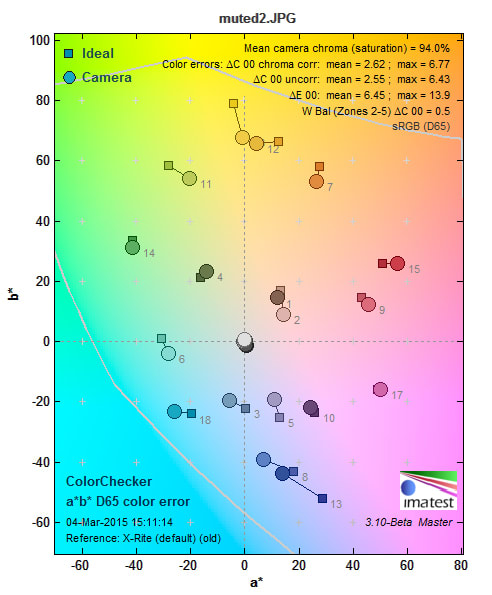
White balance was another story. While auto white balance was extremely good, and surprisingly responsive when adapting between tests. We were a little disappointed by the accuracy of the E-M5 II's custom white balance. We saw some larger-than-normal errors from this camera across our three lighting scenarios. The errors weren't as egregious as some cameras we've seen, but it's something to keep an eye on nevertheless. Thankfully, if you're shooting in a controlled environment, the E-M5 II has a fully programmable mode so you can precisely match temperature by inputting degrees Kelvin.
Video
Video has never been Olympus's strong suit. We were impressed with the strides that the E-M5 Mark II makes when compared to its forbearers, but it's still behind awesome cameras like the Sony A7 and the Panasonic GH4 by a noticeable amount. Sharpness was fine, but we noticed that the camera's compression software still strips a lot of sharpness from the sensor, and there's a lot of moiré present.
In bright light, we measured resolution of 750 LP/PH horizontal and 720 LP/PH vertical in our bright light test. In our low-light test, we measured 615 horizontal and 620 vertical. We only needed 5 lux of available light in order to make an image at 50 IRE, which is very decent compared to previous Olympus cameras.
Shot-to-Shot
An area where the E-M5 Mark II has been held back in order to less effectively destroy the reputation of its big brother, the E-M1, is when it comes to continuous shooting. We got an impressive 10.86 frames per second from the E-M5 II in our test. Unfortunately, the buffer is smaller and the high-speed rate slows down after way less shots. We were able to grab only 13 JPEGs at this rate before it slowed down to around 1 fps.
The E-M1 on the other hand, gobbled up more the 40 JPEG shots before filling up. Sports shooters, Olympus has made the decision clear for you—grab and E-M1 for the best burst performance.
Noise
Micro Four Thirds is at a bit of a disadvantage when it comes to noise. Its smaller sensor means smaller pixels, and there's much more opportunity for a lot of noise at higher ISOs. Olympus, thankfully, has managed to tread lightly in this department, giving users options on the strength of noise reduction used. While the standard settings are pretty aggressive, you always have the option to turn high ISO noise reduction down or off.
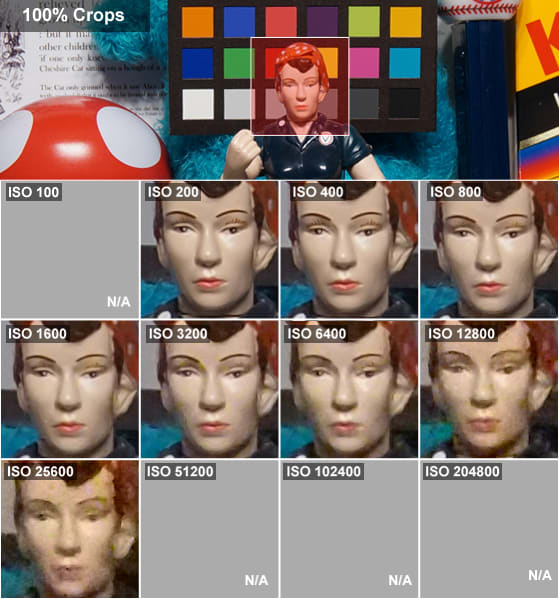
About the only complaint we have when it comes to this camera's ISO sensitivities is that it doesn't have a true low-ISO option. While you can select a low ISO, it's not a legit setting, instead using software trickery to achieve this setting. You will likely lose highlight data in exchange for any gain in noise you might get in return. The lowest ISO is ISO 200, unfortunately.
As it stands, Olympus does a great job controlling noise and keeping higher ISO shots completely usable.
Resolution
We tested the OM-D E-M5 Mark II with what is ostensibly its kit lens—the really wonderful Olympus 12-40mm f/2.8 Pro lens. That's equivalent to a 24-80mm lens on a full-frame DSLR. It's nicely sharp even when wide-open, and you can see our results for yourself below.
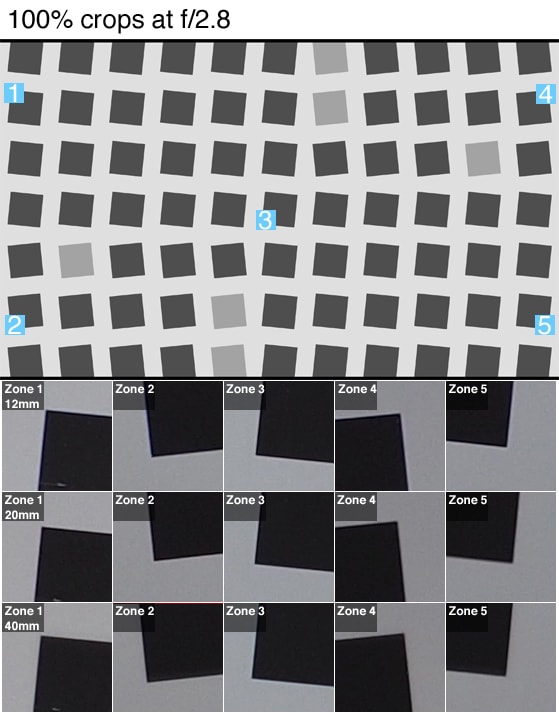
Meet the tester
Brendan is originally from California. Prior to writing for Reviewed.com, he graduated from UC Santa Cruz and did IT support and wrote for a technology blog in the mythical Silicon Valley. Brendan enjoys history, Marx Brothers films, Vietnamese food, cars, and laughing loudly.
Checking our work.
Our team is here to help you buy the best stuff and love what you own. Our writers, editors, and experts obsess over the products we cover to make sure you're confident and satisfied. Have a different opinion about something we recommend? Email us and we'll compare notes.
Shoot us an email
